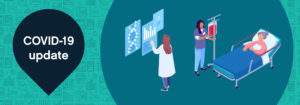It’s no secret that today’s healthcare landscape is changing. As costs rise and reimbursement models change, healthcare organizations are continuing to track towards value instead of volume. With this transition comes the rising importance of quality, especially since payers and providers are now dependent on quality measures for reimbursement. According to CMS, these measures are meant to quantify healthcare processes, outcomes, patient perceptions and organizations’ structure associated with providing high-quality care. This journey requires a shift in mindset and new approaches to sharing information to enable quality improvements.
The first step in improving quality of care is the collaboration between payers and providers. Bruce Carver, associate vice president of payer services at MedeAnalytics, notes the importance of this collaboration in a recent interview with Becker’s Hospital Review, explaining that there are great opportunities between payers and providers, especially around data and best practices, to enhance value-based care, such as eliminating gaps in care and driving positive outcomes.
The second step is to use data as a guide to outline areas of opportunities. As payers and providers adopt technologies that enable value-based care, forward thinking organizations are collaborating on quality management programs that serve as the basis of their efforts. These programs must be designed to not only measure and monitor quality measures, but also lead data-driven conversations so payers and providers can collaboratively improve clinical outcomes for their patient populations. Through collaboration and the power of data, both payers and providers can leverage valuable information in the following ways:
- To measure and record an organization’s performance – Both payers and providers can benefit from understanding where their organization is succeeding in providing their members and patients with quality care. Among the many measures, HEDIS and CMS Star Ratings have the greatest impact as value-based care unfolds.
- To help avoid duplicative care – Today’s disconnected provider environment means that many providers operate in silos and do not have insight into care performed by other providers. Duplicative care is not only a waste of time for the patient, but it also negatively affects the healthcare organizations’ bottom line. By taking a holistic approach to a data strategy, organizations can better work together to avoid this.
- To better identify high-risk patients – Data, combined with population health tools and predictive analytics can identify high-risk patients immediately instead of waiting months for data to be generated. Identifying these types of patients early can allow organizations to step in to create personalized, automated interventions that lower healthcare costs and improve the overall health of the patient.
As healthcare industry continues to evolve, payers and providers must look toward a future defined by positive outcomes for their patient populations. The focus on quality and value will become more deeply ingrained. To meet these objectives, organizations must collaboratively design programs that enable them to meet or exceed quality measures and pay-for-performance expectations—today and for years to come.
To learn more about how to improve quality of care for your members in today’s changing healthcare ecosystem, access our whitepaper, Enabling Payer and Provider Collaboration in the Journey Toward Quality Care. To learn how MedeAnalytics can help you on this journey, learn about our quality management solution here.
Get our take on industry trends
Data visualization: A picture is worth a thousand…healthcare data points?
The amount of data produced daily has grown exponentially with nearly 90% of the world’s data generated in the last two years alone. To ensure we can make sense of this data, analysts must find meaningful ways to present the information to their audiences.
Read on...How did we get here? Hospital analytics and the new normal
I have heard the word “unprecedented” so many times in 2020 that it has lost its significance; many of us have become desensitized to the extraordinary changes in the world this year.
Read on...How to help employer groups plan in a time of uncertainty
Employers and their sponsored health plans are thinking about next year’s benefit designs with a significant challenge not seen before: the effect of the coronavirus pandemic. There are important considerations to take into account before making any decisions about new or existing coverage. Becky Niehus, a director of Product Consulting at MedeAnalytics, explores these new issues and what employers can do to ensure employees are “covered.”
Read on...Healthcare’s return to “normal” after COVID-19: Is it possible?
As providers determine how to get patients to return to facilities for routine disease management and preventive screenings, opportunities are ripe for the application of analytics to triage at the right time to the right setting. Data related to COVID-19 will continue to flow rapidly, but there are possibly more questions than answers now about a return to “normal.”
Read on...



